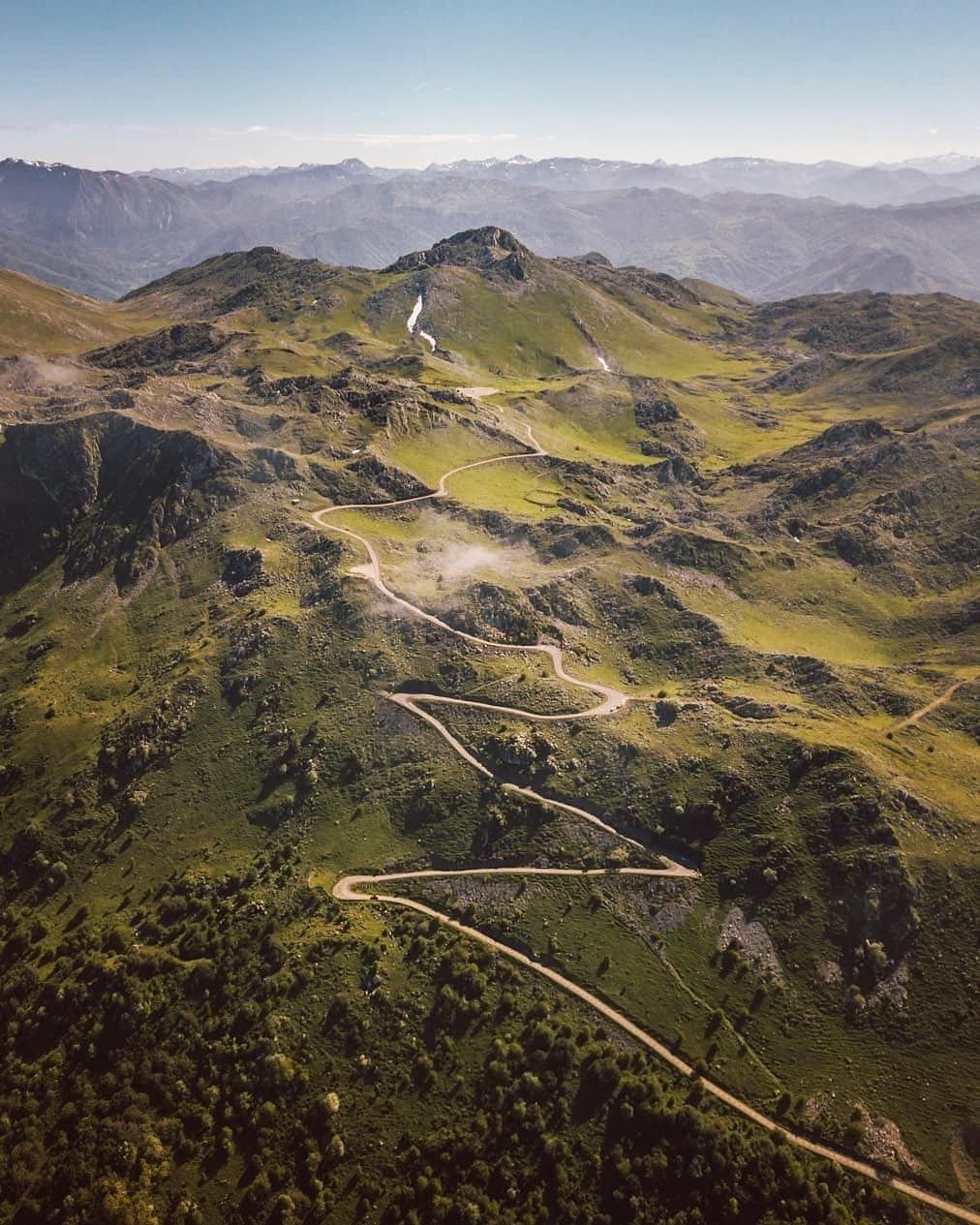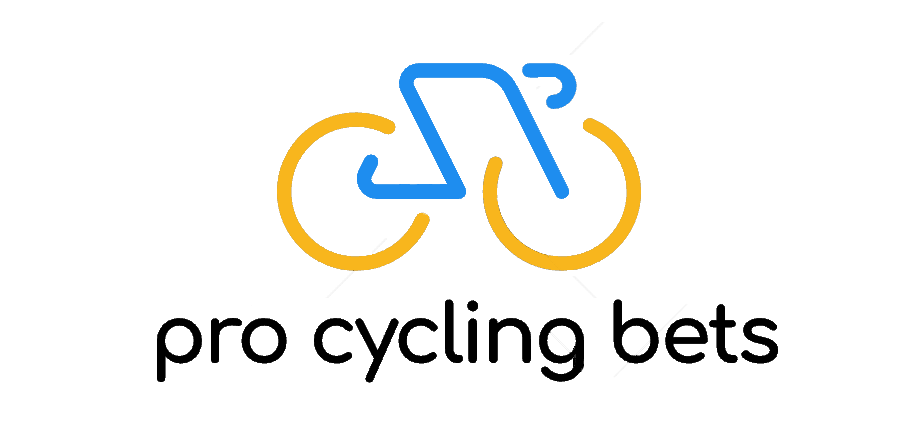The Hardest Climbs La Vuelta 2023

| Stage | Date | Rank | Elevation Gain (m) | Climbs |
|---|---|---|---|---|
| 2 | Aug 27 | 12 | 2542 | 2 |
| 3 | Aug 28 | 7 | 3468 | 2 |
| 4 | Aug 29 | 15 | 1798 | 2 |
| 5 | Aug 30 | 14 | 2384 | 1 |
| 6 | Aug 31 | 6 | 3976 | 3 |
| 8 | Sept 2 | 8 | 3608 | 5 |
| 9 | Sept 3 | 9 | 2899 | 2 |
| 11 | Sept 6 | 10 | 2214 | 1 |
| 13 | Sept 8 | Queen Stage | 4282 | 4 |
| 14 | Sept 9 | Runner Up | 4565 | 4 |
| 15 | Sept 10 | 11 | 2331 | 3 |
| 16 | Sept 12 | 13 | 2066 | 1 |
| 17 | Sept 13 | 4 | 3291 | 3 |
| 18 | Sept 14 | 3 | 4624 | 5 |
| 20 | Sept 16 | 5 | 4330 | 10 |
Hardest Climbs
Here are our top three picks for the hardest climbs of the La Vuelta 2023. Taking the top slot here doesn't necessarily guarantee that the corresponding stage will be the hardest. So keep reading for our picks for the Queen stage, runner up and rankings of the other hill climb stages.

#1 - Alti de l'Angliru - 13.2km @ 9.4% - Stage 17
Well known to the Vuelta, the riders face Angliru as the finale of Stage 17 after after a fast descent of 8km from the category one climb of Alto del Cordal (5.7km @ 8.5%). Prior to Cordal they had faced Alto de la Colladiella (6.5km @ 7.9%) 30km's earlier The total climb is 13.2km @ 9.4% with the first ramp of 4.7km @ 7.3%, then a steep next ramp of 6.5km @ 13.3%. Brutal. A very slight descent before the finish. Cantabrian Mountains / Spain / Asturias
Last used in 2020 and won by Hugh Carthy.
The organizers of the Vuelta a España wanted a mountain to rival the Alpe d'Huez and Mont Ventoux in the Tour de France and the Mortirolo Pass in the Giro d'Italia, which would go on in 2003 to add one of the world's most demanding climbs, the Zoncolan, in an attempt to compete with the new Spanish climb. The Angliru was first included in 1999, on stage eight from León.
During stage 15 in 2002, riders climbed the Angliru in rain. Team cars stalled on the steepest part, some unable to restart because their tires slipped on messages painted by fans. Riders were caught behind them and others had to ride with flat tires because mechanics could not reach them.
#2 - Col du Tourmalet - 18.8km @ 7.4% - Stage 13
Recently coming in at number three in our top five hardest climbs of the Tour de France. What's changed to make it number two in this ranking? Well that it comes AFTER Col d'Aubisque, another well known climb, that occurs earlier in the stage. So no only do riders have to face it as the final climb of the day and not in the middle of the stage like the Tour de France, but they have to surprass Aubisque first.
Riders start on a climb of 4.5km @ 5.5% for the stage, then descend for 28km only to begin immediately climbing Col d'Aubisque (16.6km - 7%). They have a small climb of Col du Soulor of 2.1km @ 5% after that followed by Col de Spandelles, a categorized one climb of 10.4km @ 8.1%. Phew that's steep.
Finally, after a valley and some reprieve they face the well known 18.8km @ 7.4% of Col du Tourmalet.
Col du Tourmalet when translated from Gascon, the region the mountain resides in, becomes "distance mountain". Tourmalet is also a cheese made from sheep milk produced in these mountains.
The Col du Tourmalet is one of the most famous climbs on the Tour de France. It has been included more than any other pass, starting in 1910, when the Pyrenees were introduced.
#3 - Puerto de Larrau - 15km @ 7.8% - Stage 14
Pyrenees - Basque Country
The Port de Larrau (Puerto de Larrau) (elevation 1,578 m (5,177 ft)) is a mountain pass on the France – Spain border in the western Pyrenees. The climb from the French side was used in the 2007 Tour de France.
The true summit of the pass is at 1,585 m (5,200 ft) and is near the Pic d’Orhi (2,017 m (6,617 ft)), the most westerly mountain over 2000m in the Pyrenees.
Hard middle section but easy start and end
#4 - Xorret de Catí - 3.8km @ 11.5% - Stage 8
By far our favourite. The Xorret de Catí is a mountain in the Prebaetic System, southern Spain.
Xorret de Catí is one of the most famous cycling climbs in the Valencia region. It instantly become a hit with fans since its first appearance in the 1998 Vuelta a España. The climb beginning just south of Castalla is undoubtedly the star side of Xorret de Catí, with consistently steep gradients - at times in excess of 20% - testing even the strongest of climbers.
Last Winner was Julian Alaphilippe in 2017
#5 - Aubisque - 16.6km - 7% - Stage 13
3 times as a stage finish, last on stage 16 during the 2007 tour and was won by Michael Rasmussen from Denmark
Last passed in the 2022 edition of the Tour on stage 18 on the Lourdes - Hauatacam stage and lead over by Giulio Ciccone
Last, and seemingly only used in the Vuelta once in 2016 and the stage was won by Robert Gesink on Stage 15
#6 - Col Hourcère - 11.6km @ 8.3% - Stage 14
First of the climbs on stage 14
Col de la Hourcère , also called Col d'Issarbe , is a road pass located in the Pyrenees in France . At an altitude of 1,438 meters, it is in the Nouvelle-Aquitaine region
With four other major passes, it had initially been on the program for the 16th stage of the Tour de France 1995, but this was canceled after the fatal fall of Fabio Casartelli the day before in the descent of the Col de Portet d'Aspet 2 .
Last won in 2020 by March Hirsch on the 9th stage
#7 - Puerto de San Lorenzo - 10km @ 8.5% - Stage 18
Healthy number of kickers in there. There's 3.7kms at 8.7%, then 4km @ 10.4% for the total of 10km @ 8.5%. Comes after a category two climb 40kms in and demarcates the 180km stage in two halves. Riders finish with #8.
#8 - Puerto de la Cruz de Linares - Stage 18 finish - (8.3km @ 8.5%)
Poor riders have to do this one twice within 25kms of each other. And the final ascent is the finishing stretch. Kickers of 5km of over 10% in there. Which is a long long way at above 15%. This is none too easy a stage with Peurto de San Lorenzo and Linares to entertain riders.
#9 - Observatorio Astrofisico de Javalambre - 11km @ 8% - Stage 6
Stage 5 - 2019 Vuelta (first and only attempt such far)
The ascent towards the observatory on the Pico del Buitre is 11.1km in length, though the average gradient of 7.8% is a deceptive one. After a very benign opening section, the gradient gradually ratchets upwards, and flits between 10 and 12% for much of the final five kilometres. There are far tougher mountain stages to come later in the race, but few will reveal quite as much about the contenders as this early test in Aragon.
The initial objective of the OAJ is to map all the visible space to study Dark Energy and Astrophysics.
#10 - Arinsal Andorra - 7km @ 8.2% - Stage 3
This one makes number ten because of just how close to the start of the race it is. It's a non-trivial climb with a first climb Coll d'Ordino which is 9km @ 5% followed by a hot and fast descent of 600m over 15km and then Arinsal Andorra which is 7km @ 8.2%
Runner Up - Col de Spandelles - 10.4km - 8.1% - Stage 13
Situated in the middle of two especial climbs on stage 13 this climb is nothing to trifle about. It only didn't clutch the top ten because it comes on stage thirteen and not earlier in the race. And potentially because it seems relatively small compared to massive behemoths on stage 13.
Hardest Stages
There's definitely a few stand out stages you'll want to mark down on your calendar. We'll start out with our pick for the Queen stage and our runner up and then dive into each specific climb stage.
Queen Stage
We've selected stage 13 as our Queen stage, also known as, the hardest mountain climbing stage of a professional cycling multi day stage race. Our hardest climb doesn't feature in stage 13 but our number two, five and runner-up most certainly do. The quantity and quality of each of these climbs combined into lengthy 180km make this an easy pick for the Queen stage.
It comes just before brutal stage 14, so rider's might keep some in reserve for the next day, and features five climbs in total...and they start them on a mountain for pete's sake.
Regardless. Interesting design. Riders start on a climb of 4.5km @ 5.5%, then descend for 28km only to begin immediately climbing their first "especial" climb of Col d'Aubisque (16.6km - 7%). They have a small climb of Col du Soulor of 2.1km @ 5% after that followed by Col de Spandelles, a categorized one climb of 10.4km @ 8.1%. Phew that's steep.
Finally, after a valley and some reprieve they face the well known Col du Tourmalet which is 18.8km @ 7.4%

Runner Up
Stage 14 easily slots in as our runner up stage. We had it first selected as our queen stage but then waffled. This could definitely be the Queen stage especially after having to face stage 13 the prior day.
At the 70km marker they face the first one, Col Hourcère - 11.6km @ 8.3%, a valley and then the second especial Puerto de Larau - 15km @ 7.8%, starting with the first 10.3km on Col d'Erroymendi of 10.3km @ 9.1%.
After a fast descent they face a relatively easy climb of 3.2km @ 5.8%, then 25km of flat before starting a category one Larra-Belagua - 9.4km @ 6.3% where they finish at the top.

